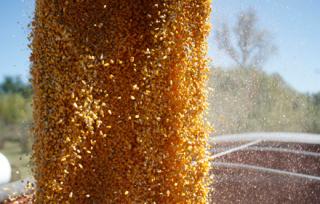
The numbers look to be bearish for corn but still a little more positive for soybeans, analysts say. With corn exports still on the decline, the relatively static number for corn in Wednesday's report means corn futures will likely slip on the report, though attention will quickly move from the report to yields coming in from harvest underway.
That could mean the high is in for corn prices, at least in the near term, says Northstar Commodity Investment Company analyst Jason Ward. "Corn is bearish, should put the top in. Beans still look bullish, lower yield followed by more usage cuts to keep carryout in line, but that usage figure is too low," he says.
"You took ending stocks up, so I think that's a little bit of a surprise, but you didn't change harvested acres. Our exports continue to come down, so that's the big difference," says Don Roose, broker and analyst with U.S. Commodities in West Des Moines, Iowa. "We've started to do a big job of rationing already this year. But, it's as much about last year's crop as it is this year's."
Wednesday's numbers likely mean a corn range from about $7.30 to $7.50 per bushel on the low end and $8.20 to $8.40 on the high end, Roose projects.
For soybeans, there's still room for upward movement in the trade on the heels of Wednesday's report. "Downside could be limited. For November beans, we're looking at $16.50 to $17/bushel," Roose says.
Attention to the numbers released Wednesday morning will likely wane fairly quickly Wednesday and further into this week, as more corn and soybean harvest reports start coming in. "Harvest will trump it, then South American weather will trump it quickly, too," Roose says.
And now, Ward says the numbers will likely cause a shift in the flow of investment money in the corn and soybean pits. "Look for funds to further reduce exposure to long corn. They may switch to longer beans," he says. "Seems like a better investment to be long beans versus corn. Still have tremendous usage while corn usage is slowing."





